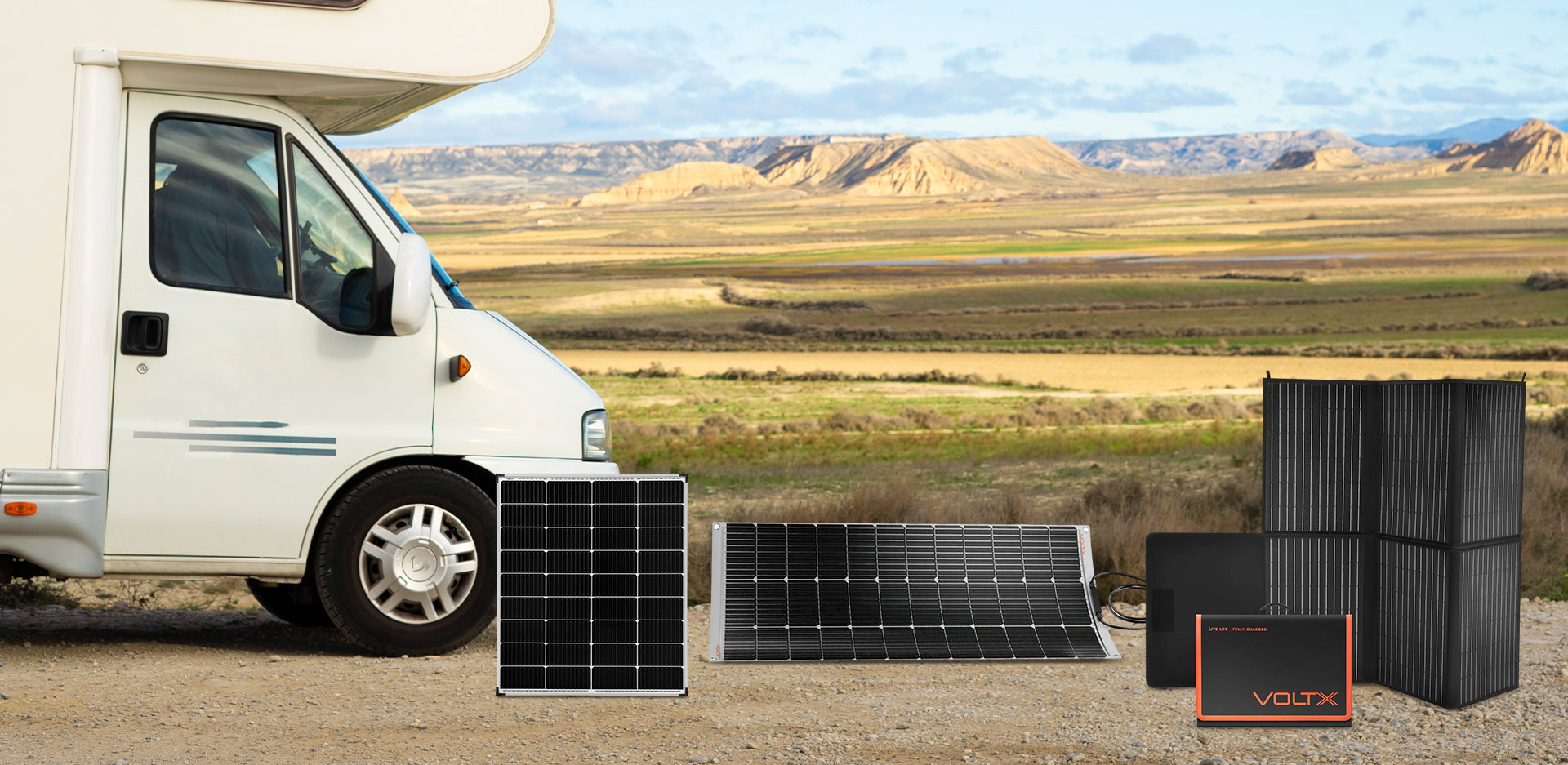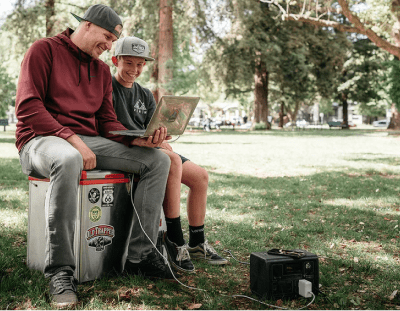With over 770,000 registered recreational vehicles across Australia and a growing number of adventurers embracing the freedom of off-grid travel, the demand for reliable portable power solutions has never been higher. Top portable solar panels for RVs have revolutionised the way modern travellers experience the great outdoors, offering a sustainable alternative to the constant drone of generators and the limitations of powered campsites. Unlike traditional power sources that tether you to designated spots or disturb the tranquillity of nature with noise and fumes, portable solar technology provides silent, clean energy that moves with you wherever your journey leads. This comprehensive guide will walk you through everything you need to know about selecting, setting up, and maximising the benefits of portable solar power for your caravan or camper, ensuring you have the knowledge to make an informed investment in your off-grid adventures.
Why Choose Portable Solar for Your Caravan or Camper
The decision to invest in portable solar panels rather than fixed rooftop systems or generators comes down to practical advantages that experienced caravanners value most. Ultimate flexibility stands as the primary benefit, allowing you to park your RV in the comfortable shade while positioning your panels in direct sunlight for optimal power generation—something impossible with fixed panels permanently mounted on your roof.
This setup enables true energy independence and freedom for boondocking enthusiasts who prefer free camping sites away from crowded caravan parks, eliminating the need for powered campsites that can cost upwards of $50 per night. Beyond the immediate cost savings on generator fuel and campsite fees, portable solar panels operate in complete silence, preserving the peaceful ambience of nature while reducing your carbon footprint compared to fossil-fuel generators that many camping grounds now restrict or prohibit entirely.
A Simple Guide to How Portable Solar Systems Work
Understanding how a portable solar panel system functions needn't be complicated—think of it as a rainwater collection system, but for sunshine. The solar panel acts as your power collector, using highly efficient monocrystalline cells to convert sunlight into electrical energy that flows through your system. The charge controller serves as the brain of your setup, managing the flow of electricity to protect your battery from overcharging, with MPPT controllers offering superior efficiency compared to basic PWM models, particularly in variable light conditions.
Your deep cycle battery functions as the power storage tank, with modern lithium or LiFePO4 batteries providing exceptional longevity and weight savings compared to traditional AGM options. For those needing to run household appliances, an optional inverter converts the stored 12V DC power into 240V AC electricity, completing a system that transforms free sunshine into usable power for all your camping needs.
Key Features to Look for When Buying
Choosing the Right Panel Type
Selecting between different portable solar panel designs requires understanding the trade-offs each type presents for your specific camping style. Folding 'suitcase' panels offer an all-in-one solution with rigid construction, built-in stands, and integrated charge controllers, making them incredibly durable and user-friendly but somewhat heavier and bulkier to store. Solar blankets and mats, like the popular Outbax Solar Blankets range, provide exceptional portability with their lightweight, highly compact design that rolls up for easy storage, though they may require additional support structures and can be less durable than rigid alternatives. Flexible panels deserve a brief mention for their ability to conform to curved surfaces, but for true portability and ease of use, the suitcase and blanket styles remain the top choices for RV enthusiasts seeking reliable off-grid power.
Here’s what one of our customers said:
“Bought the Voltx 130W fixed solar panel; received promptly; well packaged. Very happy with the product and its easy install.”
What Wattage Do You Need for Your RV
Calculating your daily power requirements involves listing common appliances. A typical camping fridge draws 40-60W, LED lights consume 5-10W each, laptops use 50-75W, and fans require 20-40W. After this, multiply them by hours of use to determine your total daily consumption. Weekend warriors who primarily charge phones and run minimal lighting will find 100-160W systems sufficient, while frequent off-gridders powering fridges and multiple devices should consider 200-300W setups. Full-time travellers running comprehensive electrical systems, including water pumps, televisions, and multiple appliances, typically require 300W or more to maintain comfortable living without compromising their energy independence.
Essential Components in a Kit
The charge controller you select significantly impacts system efficiency. PWM controllers offer cost-effective performance for smaller setups, while MPPT controllers deliver 20-30% better efficiency in larger systems and challenging light conditions. Quality cables and connectors prove equally important, with sufficient cable length allowing flexible panel placement and industry-standard Anderson plugs ensuring reliable, weatherproof connections that won't fail in harsh conditions.
Portability and Durability Factors
Balancing weight and power output requires careful consideration of your travel style. Ultralight setups sacrifice some wattage for exceptional portability, while heavier systems deliver more power at the cost of increased storage requirements. Look for panels featuring ETFE coatings that provide superior weather resistance compared to standard PET laminations, along with sturdy frames or reinforced backing materials that withstand the rigours of frequent setup and transport without compromising performance.
Top Types of Portable Solar Setups for RVs
The all-in-one suitcase kit represents the ideal plug-and-play solution for beginners, featuring integrated controllers, adjustable kickstands, and pre-wired connections that eliminate guesswork during setup. Ultra-light solar blankets cater to space-conscious travellers in smaller vans and 4WDs, with models like the Outbax 200W Solar Blanket demonstrating how modern technology packs impressive power into remarkably compact packages.
The increasingly popular power station combo pairs standalone portable panels with solar generators from brands like Jackery or EcoFlow, creating versatile, modular systems capable of powering 240V devices directly without additional inverters. Each setup type offers distinct advantages: suitcase kits excel in ease of use and durability at $250-$600, solar blankets prioritise weight savings and compact storage at $300-$700, while power station combos deliver maximum versatility for $800-$2500+ but require a higher initial investment.
Must-Know Tips for Setup and Maintenance
Getting the Best Performance
Maximising your portable solar panel's output requires following the sun throughout the day, adjusting the panel's angle every few hours to maintain perpendicular alignment with sunlight for optimal energy collection. Even small shadows from tree branches or awning edges can reduce panel output by 50% or more, making careful positioning essential for maintaining consistent power generation. Heat significantly impacts panel efficiency, dropping performance by up to 25% on extremely hot days, so ensuring adequate airflow around your panels by slightly elevating them off the ground helps maintain peak output during summer camping trips.
Simple Cleaning and Care for Longevity
Regular maintenance involves gently wiping panels with a soft, damp cloth to remove dust, bird droppings, and grime that accumulate during travel, as even thin layers of dirt can reduce efficiency by 5-10%. Before each trip, inspect all cables and connectors for signs of wear, corrosion, or damage that could cause system failures at inconvenient times, replacing any questionable components immediately. When not in use, store your panels in their protective cases in a cool, dry location away from direct sunlight, as proper storage between adventures significantly extends equipment lifespan and maintains optimal performance over years of use.
Final Thoughts on Your Off-Grid Power Solution
Embracing portable solar panels for RVs means embracing the freedom to explore Australia's vast landscapes without being tethered to powered sites or disturbing nature's serenity with generator noise. The selection process becomes straightforward when you calculate your actual power needs, choose between the convenience of suitcase panels or the portability of solar blankets based on your travel style, and invest in quality equipment from trusted suppliers like Outbax. As more travellers discover the reliability and sustainability of solar power, you'll join a growing community of adventurers who've found that true independence comes from harnessing the sun's endless energy to power their off-grid dreams.


